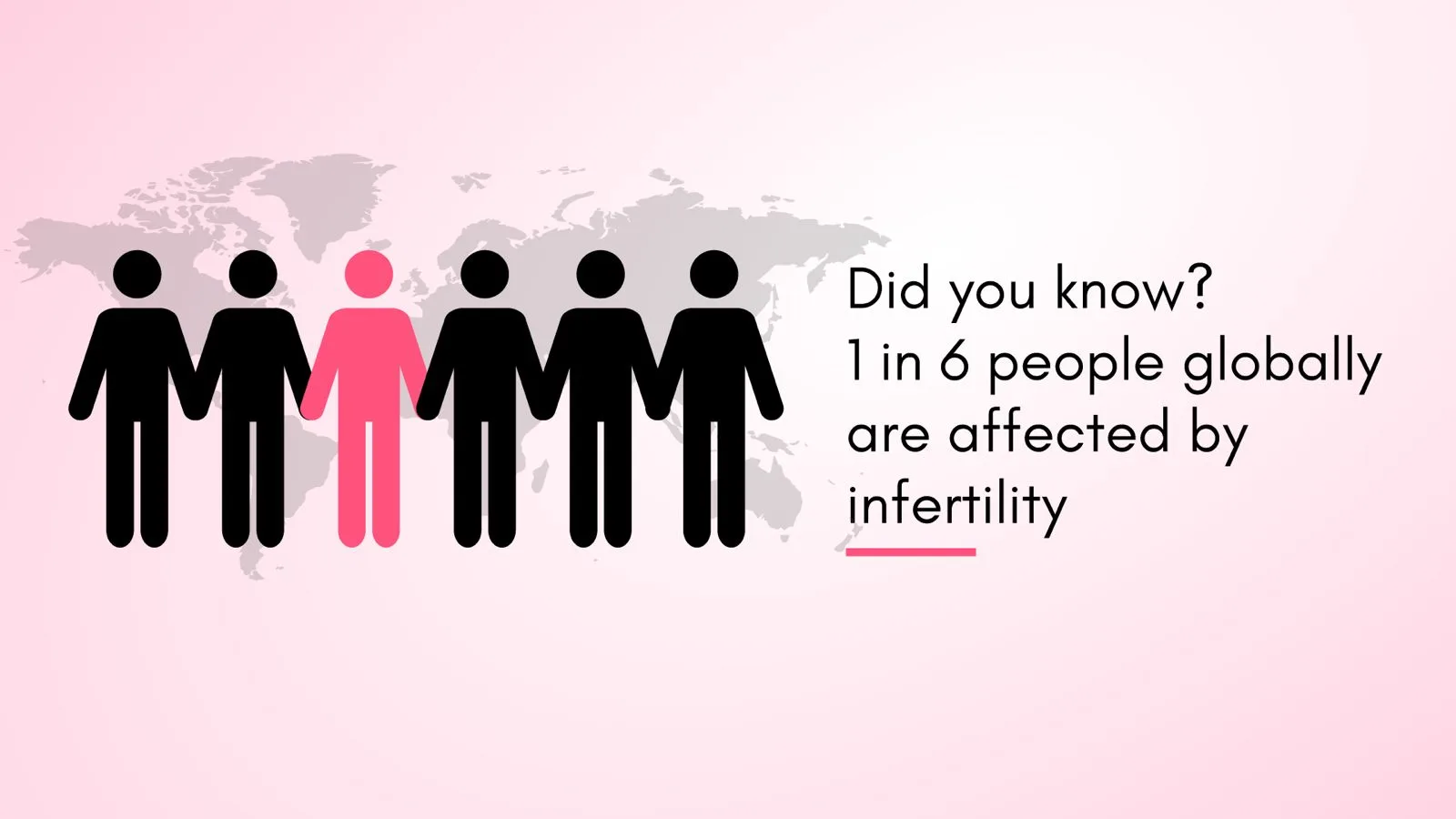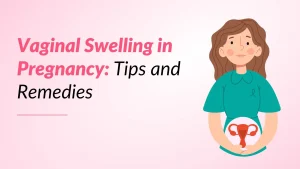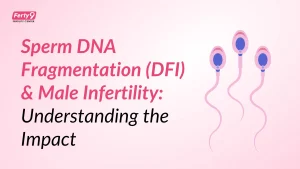How Common is Infertility Globally:
Infertility is a global health issue. It affects millions of individuals and couples worldwide. WHO defines infertility as a disease of the male or female reproductive system defined by the failure to achieve pregnancy after 12 months or more of regular unprotected sexual intercourse. According to WHO, an estimated 1 in 6 couples worldwide experience some form of infertility.This data highlights the prevalence of this condition and the need for greater awareness, support, and access to treatment options.
Infertility is a complex issue, and various factors, including age, lifestyle choices, environmental factors, and underlying medical conditions, can influence it. Infertility can have a profound impact on people and families, leading to emotional distress, financial strain, and societal stigma in some cultures.
Despite its widespread occurrence, infertility often remains a taboo subject, shrouded in misconceptions and a lack of understanding. By shedding light on the global infertility rate and its implications, we can foster a more compassionate & supportive environment for those affected by this condition.
Suggested Read:
Boosting Naturally Male fertility with Diet, Lifestyle Changes
Lifestyle Options to support female infertility treatment
Key Findings from the WHO Report on Infertility
The WHO’s report (1990- 2021) on infertility provides valuable insights into the global landscape of this condition. Here are some key findings:
- Prevalence Rates:
- Globally, an estimated 48.5 million couples were affected by infertility in 2010. The lifetime prevalence of infertility is estimated to be 17.5%. the period prevalence of infertility is estimated to be 12.6%.
- The highest prevalence rates were found in South Asia, North Africa, Sub-Saharan Africa, the Middle East, and Central and Eastern Europe.
- Gender Differences:
- The report indicates that infertility impacts both men and women, but the extent of each gender’s contribution varies by region. In certain areas, male infertility represents a larger proportion of cases, whereas in others, female infertility is more common
- Age and Infertility:
- The risk of infertility increases with age, especially for women.
- The report highlights the need for improved access to fertility awareness education and timely interventions.
- Access to Treatment:
- Access to infertility treatment varies significantly across regions and socioeconomic groups.
- Access to reasonable and effective treatment options remains limited in many low- and middle-income countries.
These findings underscore the global nature of infertility and the need for comprehensive strategies to address this issue, including improved access to education, prevention, and treatment services.
In which regions is infertility most prevalent:
While infertility affects individuals and couples across the globe, certain regions experience higher prevalence rates than others. According to the WHO report (Infertility Prevalence Estimates, 1990–2021), the following areas have the highest rates of infertility:
- South Asia: This region, which includes countries like India, Bangladesh, and Pakistan, has one of the highest infertility rates globally, with an estimated 1 in 4 couples affected.
- Sub-Saharan Africa: Many countries in this region, such as Nigeria, Ghana, and Uganda, face significant challenges in addressing infertility due to limited access to medical services and cultural stigma.
- North Africa and the Middle East: Countries like Egypt, Morocco, and Yemen have relatively high infertility rates, often attributed to factors such as consanguineous marriages and untreated sexually transmitted infections.
- Central and Eastern Europe: Several countries in this region, including Russia, Ukraine, and Belarus, have reported elevated infertility rates, potentially linked to environmental factors and lifestyle choices.
Factors Contribute to the High Rates of Infertility
Infertility is a multifaceted condition with numerous contributing factors. While some factors are within an individual’s control, others are influenced by external circumstances or underlying medical conditions. Here are some of the key factors that contribute to the high rates of infertility worldwide:
- Age: As individuals, particularly women, age, their fertility potential decreases. This is due to the natural decline in ovarian reserve and egg quality over time.
- Lifestyle Choices:
- Excessive alcohol consumption and smoking can impair fertility in both men and women.
- Obesity and being underweight can also negatively impact fertility.
- Stress and poor nutrition may contribute to infertility by disrupting hormonal balance and overall health.
- Environmental Factors:
- Exposure to certain chemicals, pollutants, and toxins can affect reproductive health and fertility.
- Occupational hazards, such as prolonged exposure to heat or radiation, may also play a role.
- Sexually Transmitted Infections (STIs): Untreated STIs, such as chlamydia and gonorrhoea, can result in pelvic inflammatory disease and scarring, leading to infertility in women.
- Underlying Medical Conditions:
- Hormonal variances, such as polycystic ovary syndrome (PCOS) and thyroid disorders, can impact fertility.
- Structural anomalies in the reproductive organs, such as fallopian tube blockage or uterine fibroids, can hinder conception.
- Autoimmune disorders and certain chronic diseases may also contribute to infertility.
- Delayed Childbearing: As more individuals and couples postpone parenthood for various reasons, such as pursuing education or careers, the risk of age-related infertility increases.
- Access to Healthcare Services: Limited access to quality healthcare services, including infertility diagnosis and treatment, can exacerbate the problem in many regions.
Treatments and Support Systems to Manage Infertility
While infertility can be challenging and emotional, various treatments and support systems are available to help individuals and couples navigate this journey. Here are some common approaches:
Lifestyle Modifications:
- Adopting a healthy diet, maintaining a healthy body weight, and reducing stress can improve fertility outcomes.
- Quitting smoking and limiting intake of alcoholic beverages can also positively impact reproductive health.
Surgical Interventions:
- Procedures like laparoscopic surgery can correct structural abnormalities or remove blockages in the reproductive organs.
- Doctors may perform varicocele repair or vasectomy reversal in cases of male infertility.
Medication and Hormonal Treatments:
- Fertility medicines, such as clomiphene citrate and gonadotropins, can stimulate ovulation in females with ovulatory disorders.
- Doctors may prescribe hormone replacement therapy to address hormonal imbalances that contribute to infertility.
Assisted Reproductive Technologies (ARTs):
- In-vitro fertilisation (IVF): This involves retrieving eggs and fertilising them with sperm in a laboratory setting before transferring the resulting embryo(s) into the uterus.
- Intracytoplasmic sperm injection (ICSI): This technique includes injecting a single sperm directly into an ovum (egg) for fertilisation and is often used in cases of male infertility.
- Other ART procedures, like intrauterine insemination (IUI) and fertility preservation techniques, may also be recommended based on individual circumstances.
Counselling and Support Groups:
Infertility can take an emotional toll on individuals and couples. Seeking professional counselling or joining support groups can provide a secure space to share experiences and receive guidance.
It is crucial to consult with doctors, such as fertility specialists, to explore the most appropriate treatment options and support services based on individual circumstances and preferences.
Suggested Read: 10 Ways to Stay Fertile in Your 30s
Conclusion
Infertility is a global health concern. Contributing factors to infertility range from age and lifestyle choices to environmental factors, underlying medical conditions, and limited access to healthcare services. Addressing these factors through education, prevention, and improved access to treatment is crucial in combating the global infertility crisis. By raising awareness, destigmatising infertility, and promoting access to comprehensive care, we can create a more inclusive environment for couples affected by this condition.





























